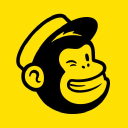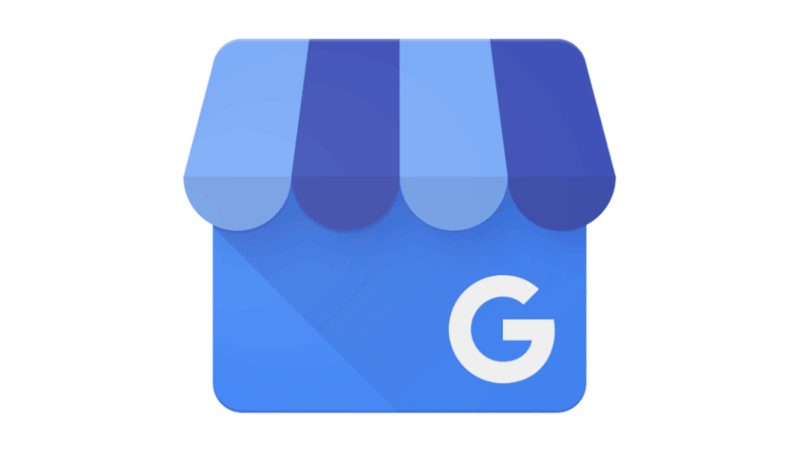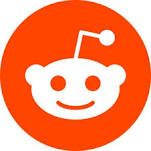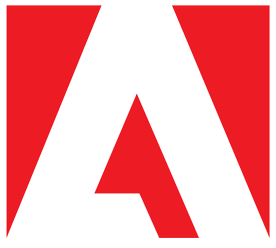My Coupons And Promo Codes Website Makes $3K/Month
Hello! Who are you, and what business did you start?
My name is Uzair Farooq, and I'm the founder and CEO of PennyCanny. I started this coupon website in 2021, which is now generating $3,000 monthly profit.
My website helps online buyers find the best deals and discounts on top stores like Wayfair, JCPenny, and DoorDash. Customers can get free coupons for fitness equipment stores like NordicTrack and promo codes for fashion stores such as Ralph Lauren and Shein.
We also provide buyers with useful tips on how to save money when shopping online through blogging and social media platforms. Our goal is to help people get the best value for their money and make their online shopping experiences delightful.
Customers are always looking for online discounts to get the best deals from their favorite stores…So, all we had to do to attract customers was to provide the latest coupons, and that we did.
What's your backstory, and how did you come up with the idea?
I’m a developer turned solopreneur with expertise in front-end and back-end technologies, including Node.js, PHP, SQL, JavaScript, Typescript, and React. I started my professional journey with Convo, a Slack competitor, and meanwhile wrote an open-source library arrive.js.
My JavaScript library helped me secure a job as a freelancer at a major coupon website. I was hired to build their coupon extension, and this first-hand experience made things easy in the long run.
The idea of building my coupon platform struck my mind while I was involved in trading after leaving the job. Things really went my way during the “Cryptocurrency Boom” in 2021; I got good returns and became financially stable.
So, I braced myself for the entrepreneurial journey, and it’s going pretty well so far.
Take us through the process of building the first version of your product
Initially, I was more interested in building a browser extension like Honey. The reason behind it was simple. I had already worked on a similar project before and was willing to build something advanced.
As I mentioned earlier, I invested my savings in the cryptocurrency market and got good returns. So, I bootstrapped my venture. I allocated $10,000 for this project, started the development process, and hired my first employee (a developer) in late 2021.
However, as we were building and testing the coupon extension, I realized my first entrepreneurial mistake.
I had completely ignored the marketing perspective and had no plan for that. As I gave it serious thought, it seemed difficult for me to reach the target audience. There was no way that online buyers would start using the browser extension developed by an anonymous brand. And I neither have enough budget nor the courage to spend extensively on paid marketing campaigns.
First Version of PennyCanny (December 2021)

By then (3 months into the project), we had done most of the hard work and completed half the development. However, I decided to pause the work and thought that building a coupon website would be more suitable.
We diverted our efforts and hired extra sources, including a UX designer and two more developers. This helped me pace up the speed, and along the way, we hired an SEO expert to streamline our website structure. Our main focus was developing a minimalistic website that’s simple and easy to navigate.
Approximately 6 months later, we built the PennyCanny website and were ready to go live online.
Second Version of PennyCanny (December 2022)

Once the website version was completed, I added the backend stores. Our SEO expert helped us identify the right online stores that offer regular coupons and are popular among customers. To add the latest coupons on each store page, I hired a team of 12 members for our operations team.
Current UX Design (PennyCanny 2024)

My advice for first-time entrepreneurs is to follow the heart but not forget to analyze the market… Instead of waiting for the right time or funding, start building small and make your way to the top.
Can you describe the process of launching the business?
We had built our coupon website at the start of 2022 but decided to delay the launch for a few months. The reason was simple; I wanted to add popular stores but didn’t want to copy coupons like others. It took us some time to find ways to collect promo codes and train the Ops team.
We started with food brands like Subway and Burger King and then extended our services to delivery apps such as Grubhub, DoorDash, and Just Eat. These stores were chosen because they are popular among young and elderly as well as workers, businesspersons, and students.
Collecting online coupons requires effort, as you've to scour promo codes across the web. That's why I hired a team of 12 members for our operations team. The first member (Ops team manager) I hired already had some experience and had worked with another coupon website. The rest were trained.
We manually collected coupons by visiting online stores, signing up for their newsletters, and using social media channels. And we still follow the same process. The team first validates the coupons by applying them and then uploads them on the backend portal we've built specifically for their ease.
We increased the SEO and social media teams to reach the audience across multiple channels. As a result, the website started getting traffic, but only a few coupons were sold. Still, that was a big achievement for me as a first-time entrepreneur.
Since launch, what has worked to attract and retain customers?
The best thing about running a coupon website is that you aren’t selling anything. In fact, it’s the other way around.
Customers are always looking for online discounts to get the best deals from their favorite stores. They need coupons and promo codes which they can apply to lower the prices. So, all we had to do to attract customers was to provide the latest coupons, and that we did.
At PennyCanny, we only offer up-to-date and valid coupons for stores that we cover. For the same reason, we started getting immediate results from online customers who were hunting for relevant coupons.
First 6 Months Stats (Google Search Console)

We received a good response from online buyers and saw a gradual increase in traffic on Search Console. What worked well for us is that we already had a digital marketing team working on the SEO Strategy.
I am not a strong preacher of running PPC Ads or paid campaigns on social media channels. In my view, if you are offering something good, all you have to focus on is the right marketing platforms. For us, these were the search engines; Google and Bing.
We devised an SEO strategy that is focused on providing the right information to online buyers. Of course, the key to success is offering coupons that work, but SEO helped us fetch good traffic.
How are you doing today, and what does the future look like?
So far, I am satisfied with the traffic we are getting on PennyCanny. We only have a handful of stores on the website (around 50), but the response is encouraging. I’m not saying that this is it, as we are continuously aiming to engage more visitors to the website.
Annual Traffic Stats (Google Search Console)

The website hasn't even touched the 1 million mark yet, but the future seems promising to me.
We are now creating content hubs and customer guides for online buyers to provide them with the right information. Also, we have not started working on the newsletter or email campaigns yet. We are establishing our social media presence right now, but not vigorously. Our main focus is adding more stores to reach and serve a wider audience on a global scale.
So far, we are only providing coupons for US customers and, to some extent, to UK and Canadian residents. Hopefully, we will be covering stores across multiple regions within the next few years.
Another thing that I would love to take up in the future is completing our browser extension. It’s an unfulfilled dream that has great market potential and can help customers save more.
Through starting the business, have you learned anything particularly helpful or advantageous?
The entrepreneurial journey is supposed to be a roller-coaster ride; honestly, I was mentally prepared for setbacks and delays.
The good thing for me was that I was self-funding my venture, so there was no external pressure. I was neither answerable to any angel investor nor had to get approval before making important decisions. In a nutshell, I have full control and can make data-driven choices to further grow my venture.
On the other hand, being self-driven means I don’t have a second pair of eyes. However, the good thing is that I have a cooperative team that is self-motivated and open to ideas and brainstorming. Being an equal opportunity provider, I take pride in my decision and am glad about it.
One of the good decisions that I’ve made is hiring remote employees, which has helped me build a great team. Right now, we have a dedicated marketing team consisting of SEO experts, content specialists, copywriters, and social media experts. We are utilizing different marketing approaches to accelerate traffic, leads, and sales.
What platform/tools do you use for your business?
We have used node.js, typescript, AWS Lambda@Edge, AWS Cloudfront, and AWS Cognito for backend development. For front-end development, we have relied on Handlebars and TypeScript. As far as database usage, PennyCanny is supported by AWS DynamoDB.
WordPress was our first choice as a content management system, and it is working well for us. However, we have custom-developed the design to improve our UX and boost page speed performance. Also, we are using SEMrush to keep track of SEO growth metrics and Low Fruits to find low-competition keywords.
What have been the most influential books, podcasts, or other resources?
My first book on finance was Rich Dad Poor Dad, but Rework by David Heinemeier Hansson and Jason Fried inspired me the most.
Another book that has helped me through my startup journey is "The Hard Thing About Hard Things." Being a tech-savvy person, I also loved reading "The Innovator's Dilemma" and "Steve Jobs."
Advice for other entrepreneurs who want to get started or are just starting out?
My advice for first-time entrepreneurs is that you should follow the heart, but don’t forget to analyze the market. If you are a technical person like me, I would suggest you focus on opportunity gaps. Instead of waiting for the right time or funding, start building small and make your way to the top.
However, don’t indulge yourself in the intricacies while you are working on the startup. The key to success is in understanding the people’s needs and understanding the market mood. Although the world has moved online, the customers’ mindsets are the same.
The consumer market always looks for products or services that offer ease. So, if you have an idea that’s worthy and can offer value, don’t hesitate to act on it.
One thing that worked for me was valuable content, as today’s customers are hungry for useful information. The best SEO practices can only make you appear in front of the audience. But your services or products won’t stick if the information you provide is vague. Also, I recommend you try content marketing to reach the audience across multiple channels to grow your reach.
Where can we go to learn more?
You can follow us on Facebook, Instagram, Pinterest, and X (formerly Twitter) to assist businesses. You can read more about Wellyx on our blog, LinkedIn, and YouTube, or email us at info@pennycanny.com.

Download the report and join our email newsletter packed with business ideas and money-making opportunities, backed by real-life case studies.

Download the report and join our email newsletter packed with business ideas and money-making opportunities, backed by real-life case studies.

Download the report and join our email newsletter packed with business ideas and money-making opportunities, backed by real-life case studies.

Download the report and join our email newsletter packed with business ideas and money-making opportunities, backed by real-life case studies.

Download the report and join our email newsletter packed with business ideas and money-making opportunities, backed by real-life case studies.

Download the report and join our email newsletter packed with business ideas and money-making opportunities, backed by real-life case studies.

Download the report and join our email newsletter packed with business ideas and money-making opportunities, backed by real-life case studies.

Download the report and join our email newsletter packed with business ideas and money-making opportunities, backed by real-life case studies.











































